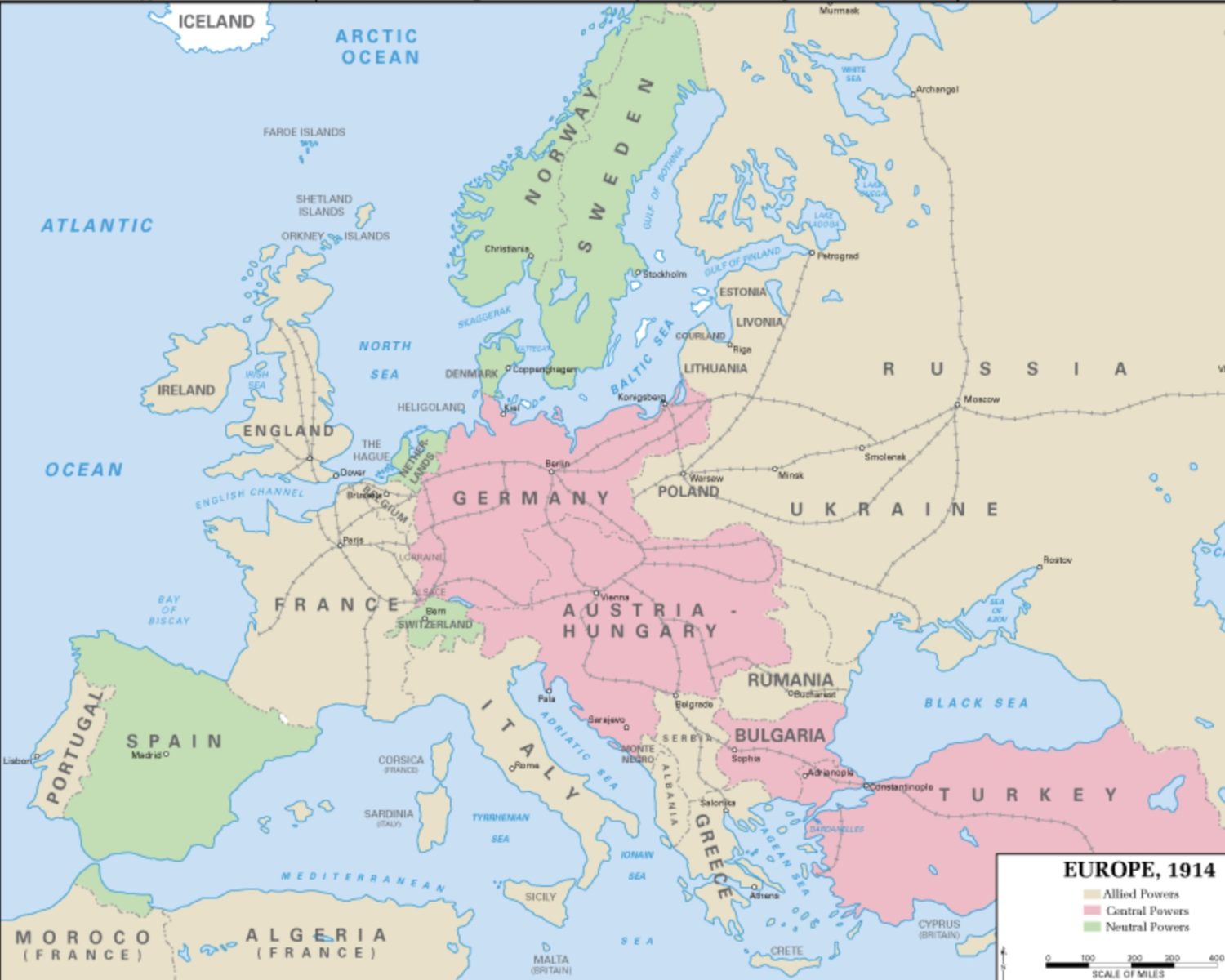Wars Between Hungary and Romania
Military History of the 20th Century
Neighboring nations often engage in conflict. Today, we look at the wars and military conflicts between Hungary and Romania, two nations who both claimed territory during the 20th Century that led them into conflict with each other.
There were several conflicts between Hungary and Romania in the 20th century, most notably:
World War One:Hungary, which was part of the Austro-Hungarian Empire, and Romania were on opposing sides. Romania declared its neutrality at the outbreak of the war in 1914, but by 1916, it decided to join the war on the side of the Allies (France, Russia and the United Kingdom) in order to regain territory that had been part of Romania before being ceded to the Austro-Hungarian Empire.
The Austro-Hungarian Empire and its German allies responded by launching an invasion of Romania in August 1916. The Romanian army, which was poorly equipped and trained, was quickly defeated and by December 1916, Bucharest, the capital, had fallen to the Central Powers. The majority of Romania was occupied by Austro-Hungarian and German forces.
After the fall of Bucharest, a small Romanian army and government continued to resist from Moldavia and the Eastern front. The Romanian resistance was successful in keeping the Eastern front open, and providing supplies to the Russian army. The Russian Revolution caused Russia to make peace with the Central Powers, and Romania was forced to sign a peace treaty with their enemies.
Romania re-entered the war in November, 1918, right before the end of the fighting on the Western Front.
In summary, the War between Hungary and Romania during World War One was a short but intense campaign, where Romania, which was initially neutral, joined the Allies and was quickly defeated by the Central Powers, led by the Austro-Hungarian Empire. The war ended with the defeat of Romania and its occupation by the Austro-Hungarian Empire. However, Romanian military forces continued to resist from Moldavia and the Eastern front, and the resistance was successful in keeping the Eastern front open, and providing supplies to the Russian army.
After World War I, Hungary experienced a period of political and social turmoil, which resulted in a civil war. The conflict began in 1919, and it was fought between the Hungarian Soviet Republic, which had been established in March of that year, and a variety of anti-Communist forces, including the Hungarian government, which was supported by Czechoslovakia, Romania, and Yugoslavia.
During World War Two, both Hungary and Romania were part of the Axis, and were thus allied with each other and with Germany and Italy. Hungarian and Romanian troops would primarily fight on the Eastern Front against Soviet forces. By the end of the Second World War in 1945, both Hungary and Romania were invaded and occupied by the advancing Soviet Red Army as Germany and the Axis was forced to retreat.
The Hungarian Soviet Republic was established after the collapse of the Austro-Hungarian Empire, and it was the first communist government to be established in Europe, outside of Russia. It was led by Béla Kun, a communist revolutionary, and it implemented a number of radical policies, including the nationalization of industry, land reform, and the formation of a Red Army.
The civil war was fought primarily in Hungary, but it also spilled over into Czechoslovakia and Romania. The Hungarian Soviet Republic was ultimately defeated in August 1919, and it was replaced by a right-wing government led by Admiral Miklós Horthy. The civil war resulted in the deaths of an estimated 10,000-15,000 people, and it was followed by a period of political repression, known as the “White Terror” against the left-wing elements of the society.
The Treaty of Trianon (1920) which resulted in the significant loss of territory for Hungary including Transylvania which was given to Romania. This treaty was imposed by the victorious powers of World War I and the Hungarian government rejected it, causing tensions between the two countries. The Treaty of Trianon was signed on June 4, 1920, and it was one of the treaties that ended World War I. Specifically, it was the peace treaty that officially ended the state of war between the Allied Powers and Hungary, which had been an ally of Germany and had been a sovereign part of Austria-Hungary during the war. The treaty was signed at the Grand Trianon Palace at Versailles, near Paris, France.
The treaty imposed significant territorial losses on Hungary, reducing its territory by two-thirds and its population by one-third. The treaty also imposed heavy reparations on Hungary and limited its military capabilities. The treaty was seen as very harsh by the Hungarian government, and it was rejected by many in Hungary, causing a lot of resentment towards the treaty, which further increased the tensions between Hungary and its neighbors.
This resentment led in part to the Second Vienna Award of 1940 which resulted in the return of Northern Transylvania to Hungary from Romania. This decision was taken by Hitler and Mussolini as a way to appease Hungary, and it caused tensions between Romania and Hungary.
The Hungarian Revolution of 1956, was a spontaneous nationwide revolt against the Soviet-imposed policies of the Hungarian People’s Republic and its Stalinist government, which resulted in a short-lived independent Hungarian republic. Romania, being a communist country and an ally of the Soviet Union, supported the Soviet-led intervention to put down the revolution.
Hungary remained under communist and Soviet control until communism in Hungary officially ended in 1989 with the fall of the Berlin Wall and the collapse of the Soviet Union. The country underwent a peaceful transition to democracy, marked by the withdrawal of Soviet troops and the holding of free elections.
Hungary soon joined NATO, alongside their old foes, the Romanians, who are now allies, not enemies. Similiar to other old European foes, such as the British and French, and the Germans and French, the Hungarians and Romanians, both now under more-or-less democratic rule, found they no longer have reason for emnity.

